Where Do We Operate
Medical Centers
Our medical centers are committed to providing high-quality, comprehensive medical and therapeutic services at minimal cost, in consideration of the challenging economic and living conditions faced by camp residents.
MAP Jordan continuously strives to alleviate the impact of these hardships on public health by offering medical consultations, diagnostic services, and access to essential medications for patients at its facilities.
Talbiyeh Camp Medical Center - Zizia, Amman
The Talbiyeh Camp Medical Center was established in 2019 with the aim of providing medical specialties that are lacking in the area. The clinic serves approximately 25,000 people residing within the camp, in addition to residents of the surrounding villages in the Al-Jizah District.
Gaza Camp Medical Center - Jerash
The Gaza Camp Health Center was established in 2000 and includes a wide range of specialized clinics, such as general medicine, obstetrics and pediatrics, dentistry, orthopedics and ophthalmology, dermatology, ENT (ear, nose, and throat), cardiology, internal medicine and endocrinology. The center is also equipped with a laboratory, a pharmacy, and an ultrasound imaging unit. Additionally, a physiotherapy department and a hearing assessment clinic have been added to enhance the scope of services provided
Hittin Camp Medical Center - Russaifa
MAP Jordan established its first health center in Hittin Camp in 1990, in response to the urgent need and growing demand for healthcare services. The center aims to provide high-quality medical care to residents of the camp and surrounding communities, with the goal of improving healthcare standards and increasing health awareness in the region.
Ophthalmology Clinic - Sukhnah Camp, Zarqa
Following a comprehensive assessment of the camp’s health needs, a critical demand was identified for the provision of essential primary healthcare services, with a particular emphasis on ophthalmic care. Given the challenging health and environmental conditions prevalent in camp settings, which elevate the risk of eye diseases and injuries, the clinic is dedicated to offering regular eye examinations and treatment for common ocular conditions.
Mobile Clinic - Zarqa Governorate
The mobile clinic initiative was established to deliver essential healthcare services to underserved areas with limited medical infrastructure, including refugee camps and remote, hard-to-access regions. Through comprehensive outreach efforts, the association identified a critical need to integrate a mobile clinic into its portfolio of medical services to better serve vulnerable populations.
[Visit the page]

 عربي
عربي






